Affiliate disclosure: This post may contain affiliate links. Please see our Privacy Policy.
Fiddlehead ferns (Matteuccia struthiopteris) are a delicious wild foraged spring treat that’s easy to find and identify in the spring season.
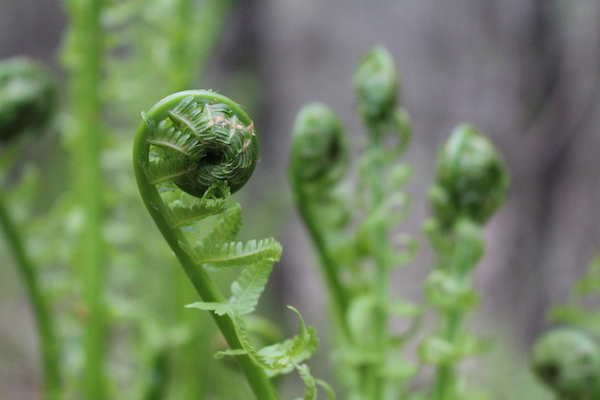
The first time I came across fiddleheads was at a farmer’s market, and I’ll bet that’s the first place most people encounter this wild spring green.
I talked to the old farmer about them, and he explained that his family has been harvesting them from “down by the creek” on his back 40 for generations. Though there are some toxic fern species, the identification isn’t particularly tricky.
The main problem is cleaning buckets of fiddleheads for market since they tend to be full of sand, and they’re covered in a natural papery coating as they grow.
He filled old mesh onion sacks with gallons of them, and then strung them up in the river to let the water do the work.
Cleaning is pretty straightforward when you’re harvesting just for yourself and your family, and they can be quickly rinsed in the sink before cooking.
If you can’t find fiddleheads in the field or at the farmer’s market, but you still really want to try them, you can order them online here when in season.
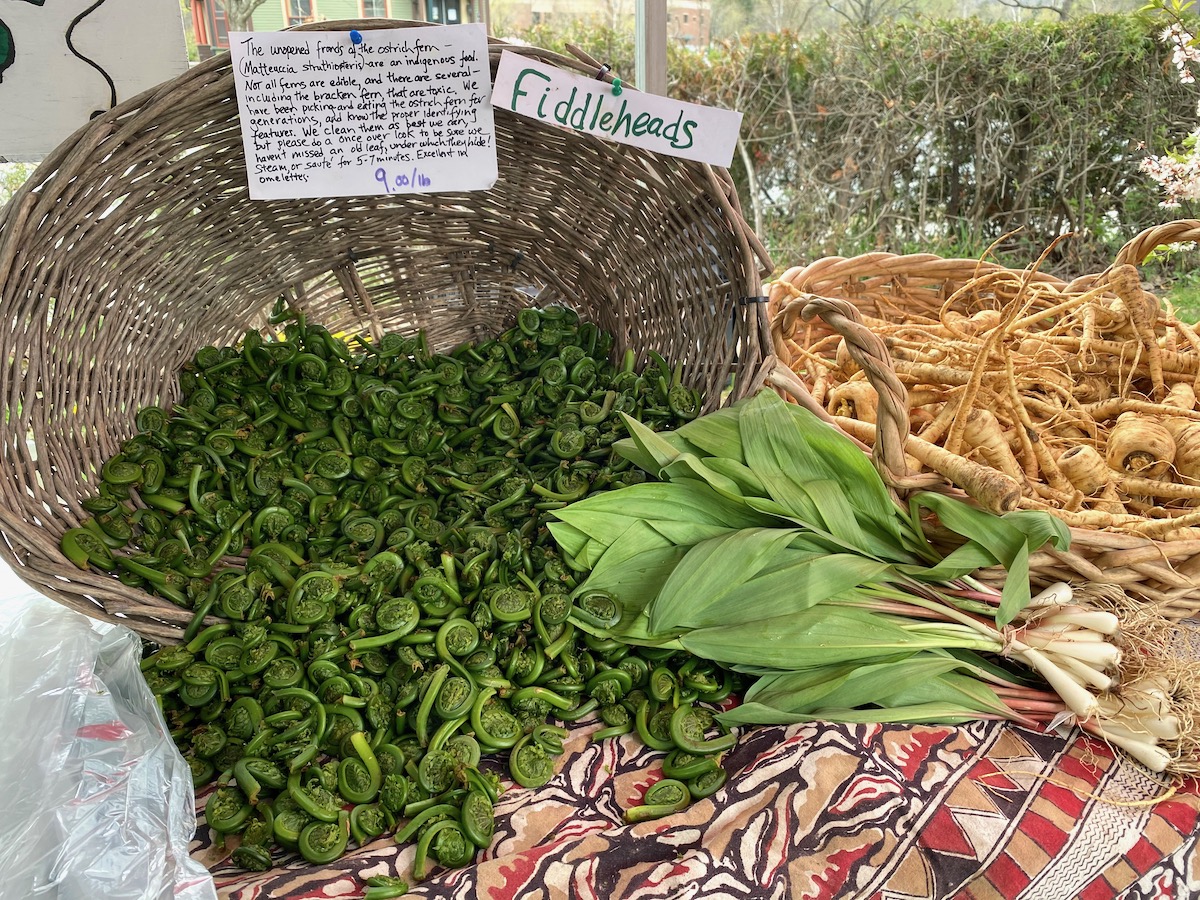
(Be aware that while the wild crop is incredibly abundant…it’s not inexhaustible. This particular farmer harvests from his family’s land, which they’ve started for generations. No one else harvests this patch, so they’re able to carefully manage the crop. Be aware that others are likely harvesting from your wild patch unless it happens to be on your own private land. Be sure to take no more than 10% of the fiddleheads from any given patch, and no more than one per fern head.)
What are Fiddlehead Ferns?
When you say “fiddlehead fern” it’s generally understood that you’re talking about one particular species of edible wild fern, namely the Ostrich Fern (Matteuccia struthiopteris).
While “fiddleheads” may be a good description of the shape of this particular edible fern, it’s not actually its real name. There are, in fact, many fern species that unfurl with a fiddlehead shape each spring.
Other species with a fiddlehead shape may be toxic, so it’s important to learn how to properly identify edible fiddleheads (aka. Ostrich Fern).
Where to Find Fiddlehead Ferns
Fiddlehead ferns range across the northeastern US, going down as far as the mid-Atlantic states. They range north well up into most of Canada, and as far west as Alaska as well.
For a more detailed picture, you can zoom in on this range map.
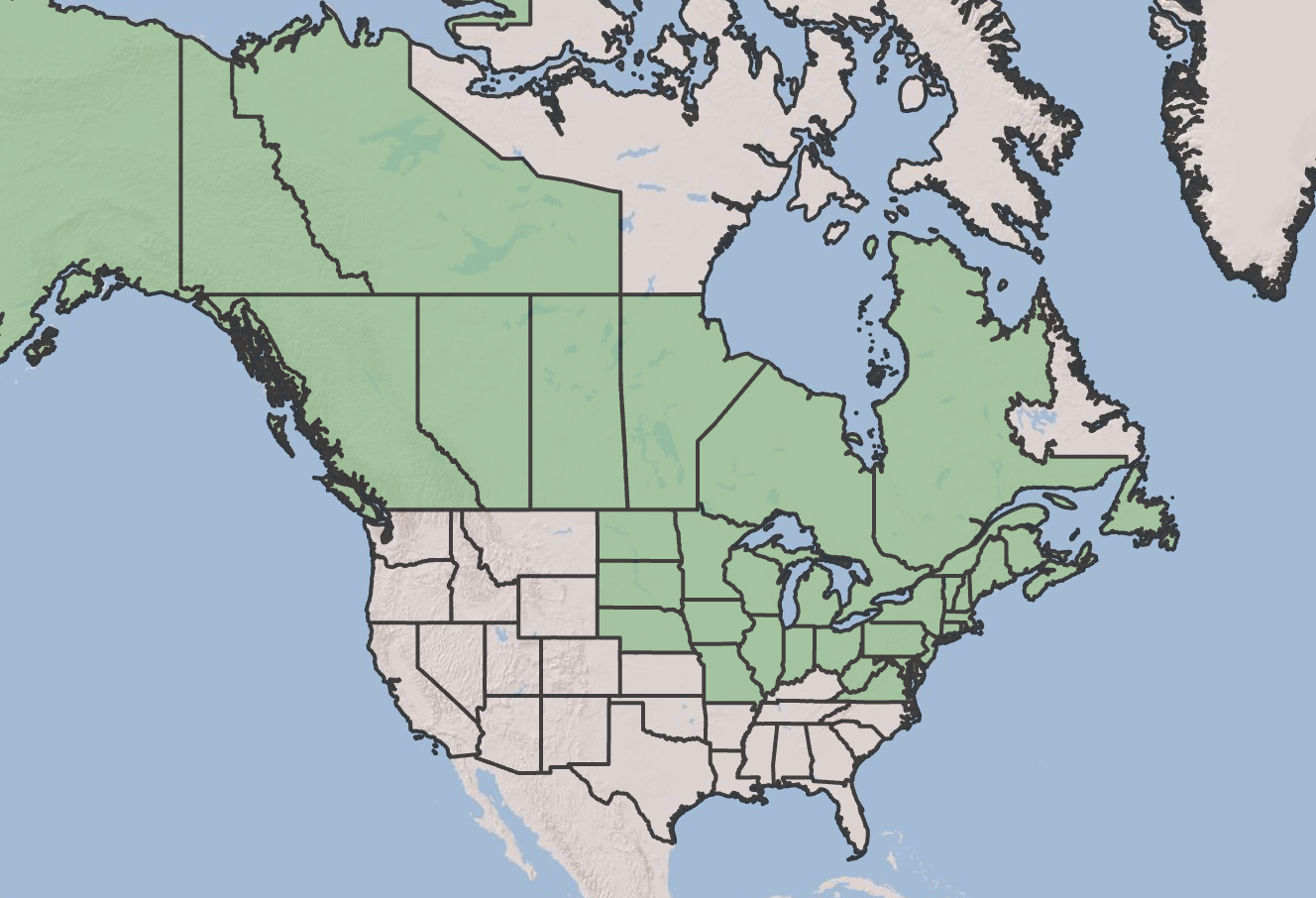
If you’re within their range, the best places to look are areas near water sources with wet, sandy soil. I’m not talking about marshy places or waterlogged soils, think well-drained washes where ample spring rains drain but don’t stay put.
Fiddleheads primarily grow along seasonal floodplains, which keep more dense vegetation from becoming established.
They don’t mind shade, especially if it’s under trees that leaf in late in the spring-like Ash trees. A bit of sun near the edge of a trail, along a river, or in a natural wash will mean much larger crops.
You’ll often find them along roadsides, but those are not the best places to harvest. Drainage from the road will mean they’re not the cleanest source.
Roadside patches are great to help you learn to identify fiddleheads, even if you’re not harvesting from those locations. They’re also great for helping you pin down fiddlehead season in your region, as it can vary considerably across their range.
Once you see fiddleheads coming up at your roadside patch, it’s time to go looking to harvest in cleaner locations.
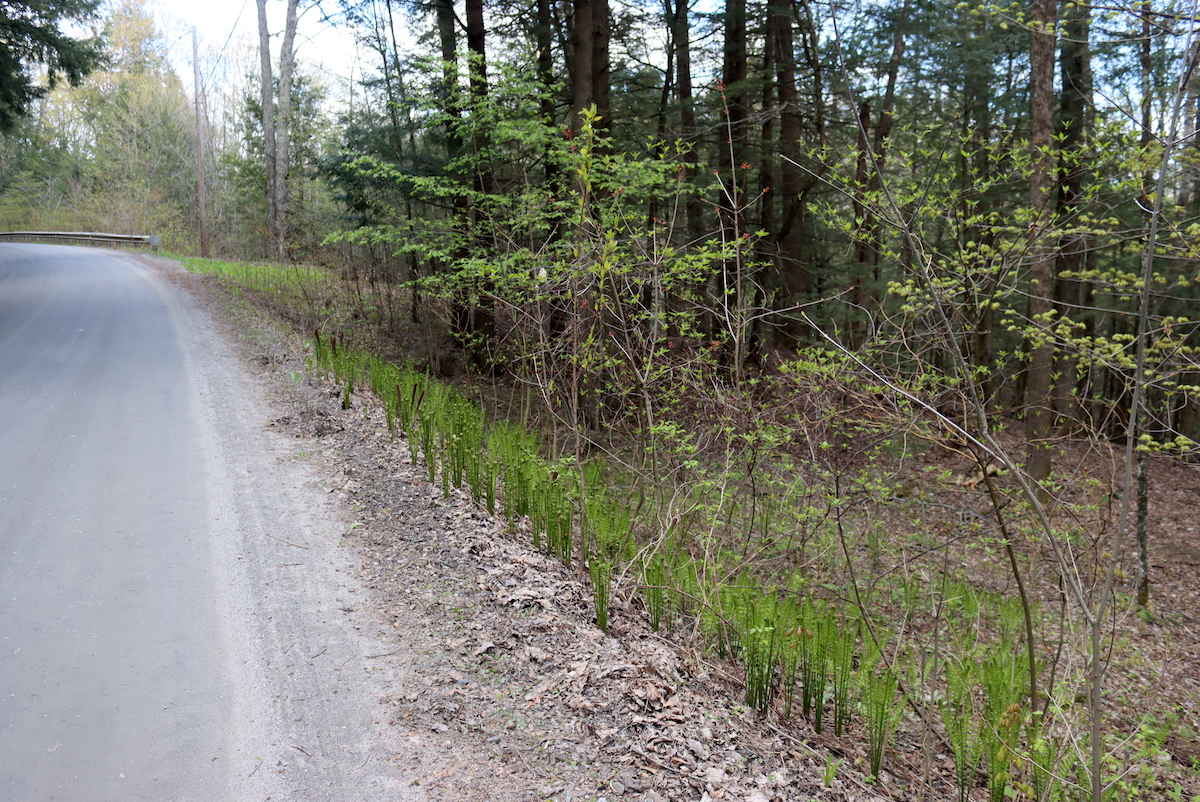
When is Fiddlehead Season?
Fiddlehead ferns (aka. Ostrich fern) is an early spring green that sprouts well before the first dandelion blossoms. The season in fact ends right around the first dandelion blooms and at that point, they’re mostly unfilled for the growing season.
Fiddlehead season is just before ramp (wild leek) season, though they do overlap a bit for the last few weeks of the season.
Look for them about 4 to 6 weeks before you see dandelion blossoms in the spring. Here in Vermont, we don’t see dandelions until mid-May, and right after we’ll see our first morel mushrooms in Late May.
Fiddleheads start in early April and then run until the first dandelion in Mid-May. Further south they’ll start sometime in March and end in April.
Identifying Fiddlehead Ferns
Start by looking for ferns unfurling in the spring. They’ll be a tight fiddlehead or coiled shape when very small, and then begin to unfurl from the bottom up.
That’s just the starting point, and many ferns have a fiddlehead pattern as they unfurl in the spring.
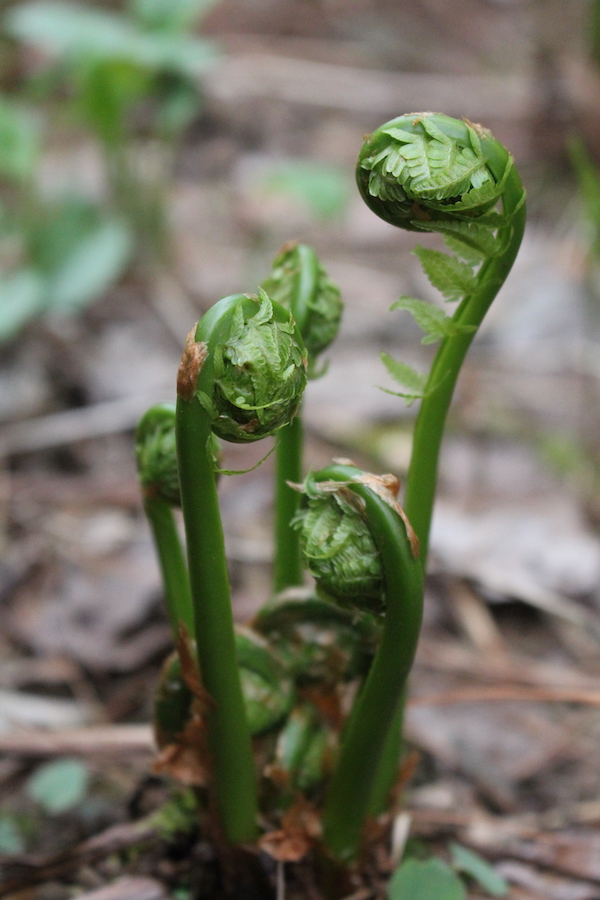
The main identifying characteristics of fiddleheads are:
- Deep green coloration
- A deep, “U shaped” groove on the inside of the stem (like celery)
- Thin brown paper-like scales when young (falls off later)
- Ostrich tail-like fronds (from last year’s growing season)
- A brown/black mound that looks a bit like a head of tightly curled black hair poking out of the ground (early in the season, before the fronds develop)
While ostrich fern has “papery scales” it never has anything that you’d describe as “hair” or “fluff.” Other look-alike ferns have that, so look for fiddleheads with a smooth surface and deep green color (without a hairy coating).
Below you’ll see an edible ostrich fern growing right next to an inedible fern that also has a fiddlehead shape. The hairy coating on the fern on the right, along with its lighter green coloration tells you it’s a look-alike.
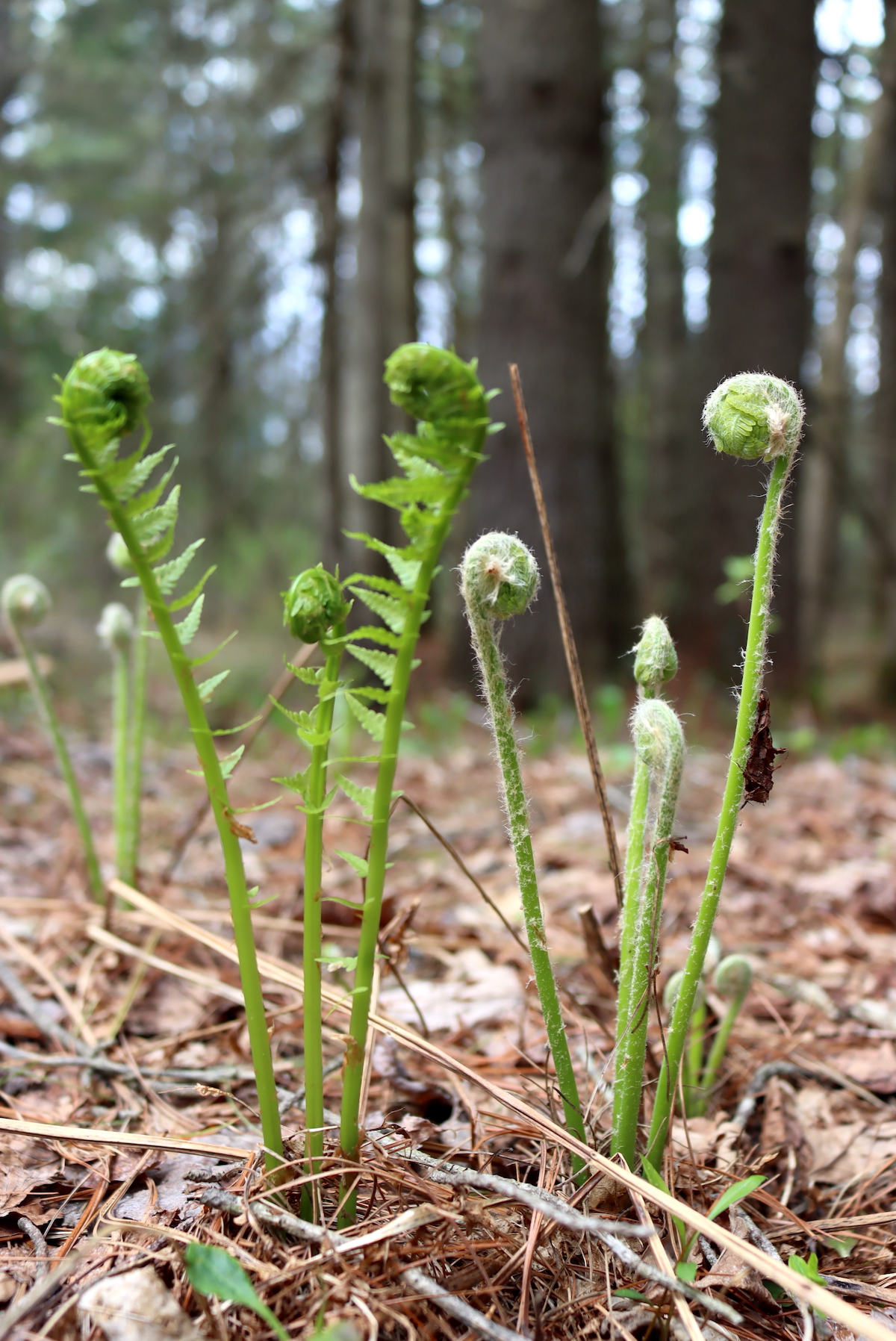
Take a closer look at the two different fiddleheads and it’s easy to see which is the correct species. One may have brown papery scales, but it doesn’t have any hair.
The papery scales will rub off the edible fiddleheads, but the hair stays stuck firm to the inedible look likes. Even if the hairy ones weren’t toxic, they wouldn’t be all that pleasant to eat.
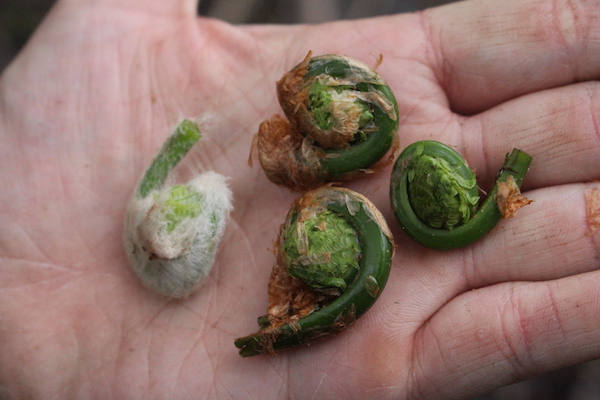
Beyond the surface, the shape of the fiddlehead stalk is distinctive. In cross-section, it’ll have a deep groove like a “U shape” when cut.
You can see it easily if you look down the fern stalk from the top.
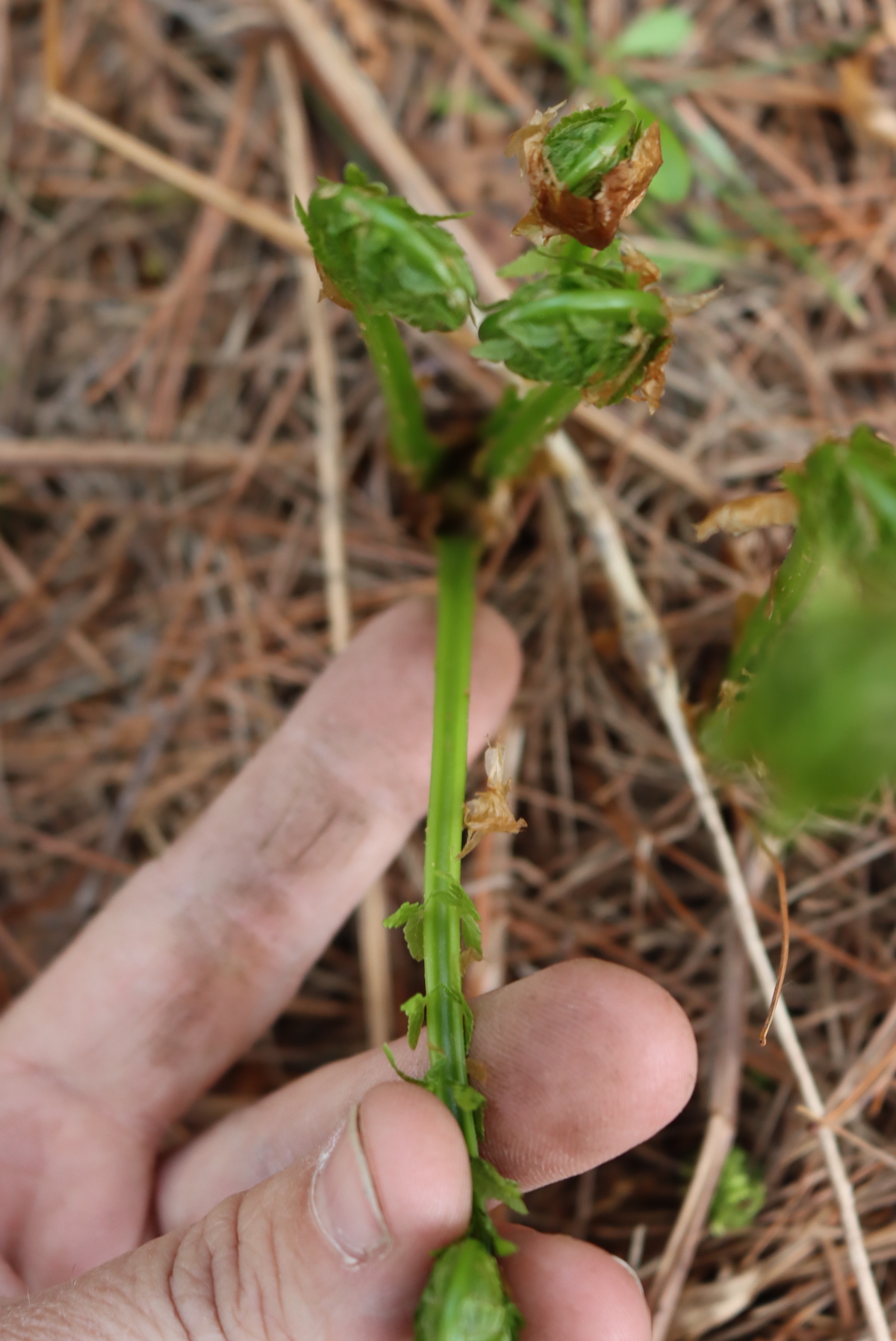
Once cut, the U-shaped groove on the stalk becomes even more apparent.
It’s kind of like a stalk of celery in cross-section, curved in at the outer margins. A celery stalk is only slightly curved, while fiddleheads have a deep U-shaped groove.
Fiddlehead look likes lack this characteristic, so it’s a pretty good indicator.
It’s also a good way to determine if the fiddleheads you bought at the farmer’s market are edible since they’ll still have this same U-shaped cross-section from their initial harvest.
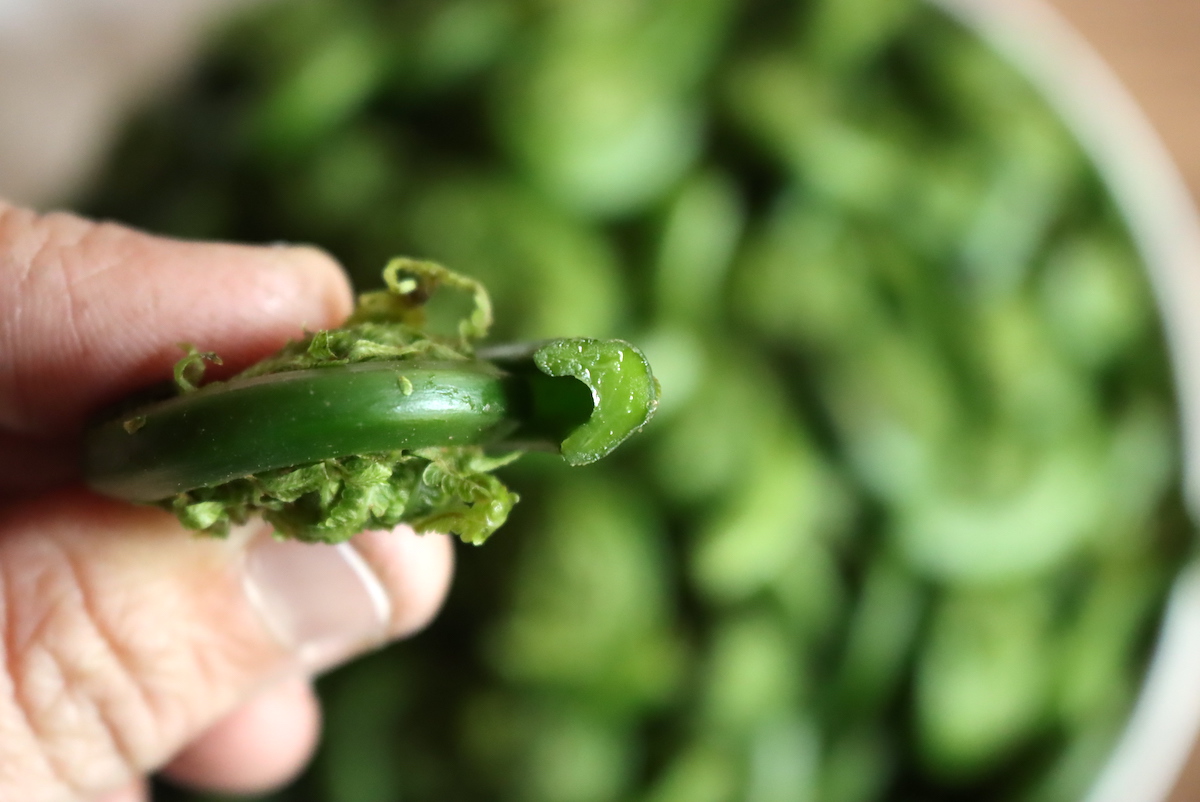
Fiddleheads have a shiny brown papery coating on the outside which protects them as they emerge from the soil. It sheds easily and should dust right off in your hands in confetti-like sheets.
Edible fiddleheads are the only ones with this scale coating, though others have hairs and other distinctive outsides that I’ve seen people misidentify as “brown paper.”
Let’s be clear about this, we’re looking for a papery coating, not a hairy coating.
The coating falls off on its own as the fiddleheads develop, so you may not see it once they’re 8 to 12” tall, even if they are still tightly coiled.
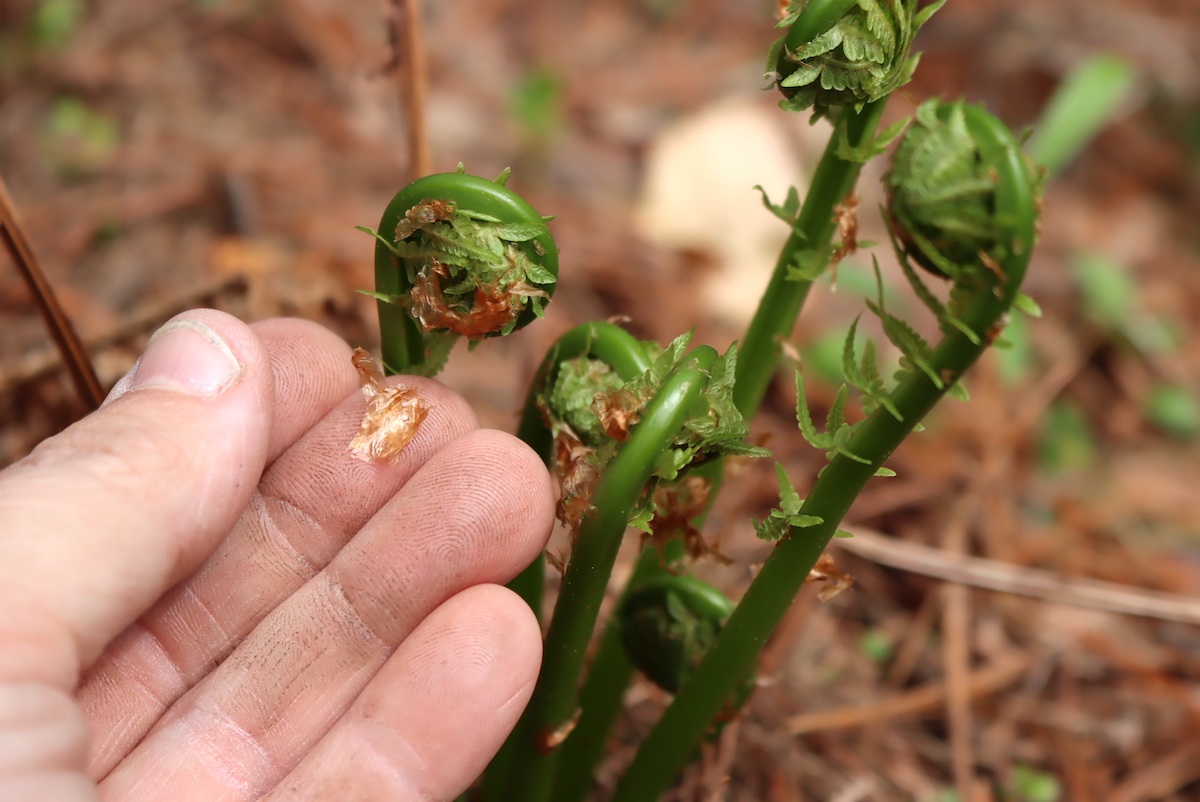
Ostrich fern is reasonably easy to spot and identify out of season too. The fertile fronds from last year’s growing season often stay erect well into the following year, and that’s actually where the plant gets its name.
The brown standing fronds look like ostrich feathers, and they’ll be there all the way through winter and into the following spring. You’ll be able to spot them easily even when they’re not in season.
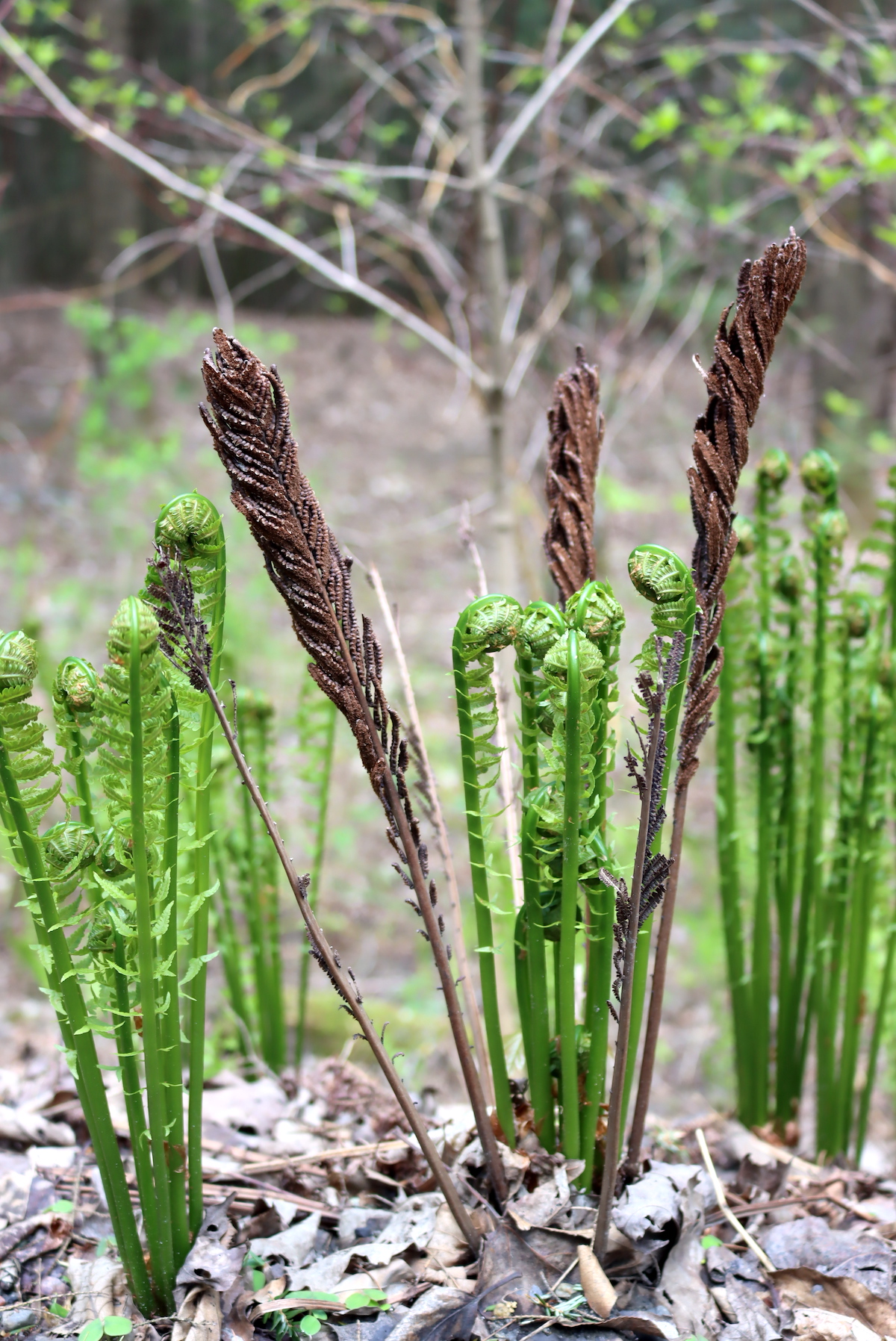
The fertile fronds aren’t always present, and sometimes they break down. You can, however, spot the dormant ferns before they start to sprout fiddleheads.
Ostrich ferns tend to grow in dense groups, so you’ll see what looks like a group of small mounds together, usually a couple of inches to a couple of feet apart. They look like a small head of tightly curled black hair poking out of the ground
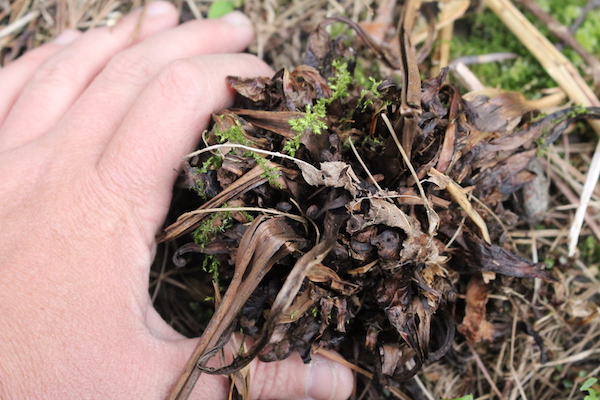
Harvesting Fiddlehead Ferns
Fiddlehead ferns are usually harvested while tightly coiled, but contrary to popular belief, they don’t have to be just emerging from the soil. You can snip off the “fiddlehead” portion from taller stalks, and they’re still so long as they’re tightly coiled.
At about 8 to 12” off the ground the tops tend to lose their tight curl, but some will maintain it all the way up to around 18” tall. Those are still fine to eat, in terms of flavor and edibility.

The main concern is sustainability. You are removing that frond from the fern, and it’s best to do it before the fern has put too much energy into the stalk. If you’re leaving 18” of “stem” below your harvest, that’s waste.
The closer they are to the ground at harvest, the easier it is on the plant.
Even once most of the fronds are grown, you can often find young fiddleheads just emerging toward the center of the plant. Go for those fresh fiddleheads and leave the taller ones to continue developing.
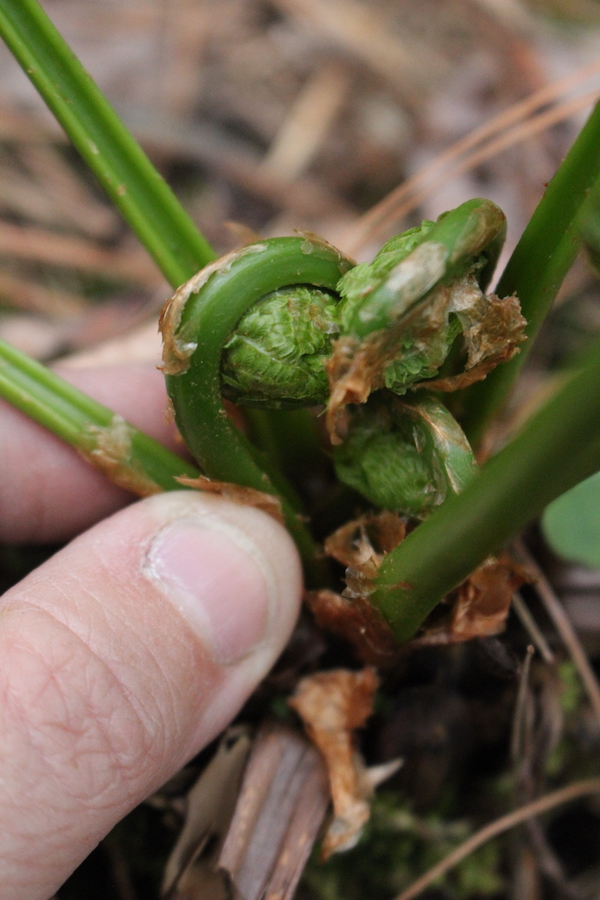
Sustainable Harvesting
Beyond timing or the harvest, there’s also quantity to consider.
A study by the University of Maine found compared various plots of fiddleheads harvested at different rates. In one plot, all the fiddleheads were harvested from each crown over several years, and after 4 years the plants completely died.
In contrast, plots, where only half the fiddleheads were harvested, were just as productive as when there was no harvesting. Fiddleheads are delicious to more than just humans, and they’re accustomed to wild harvests by deer and other woodland creatures.
There is a tipping point, and it’s a bit beyond the halfway point, where the fern isn’t invigorated by harvesting but harmed instead.
While up to half the fronds on any plant may be a sustainable harvest, it’s likely you’re not the only one harvesting. Even on your own private land, you’ll be sharing with wildlife.
I’d suggest harvesting no more than 10 to 20% of the total crop in any given year, and avoiding areas that show evidence of prior harvest (by humans or otherwise).
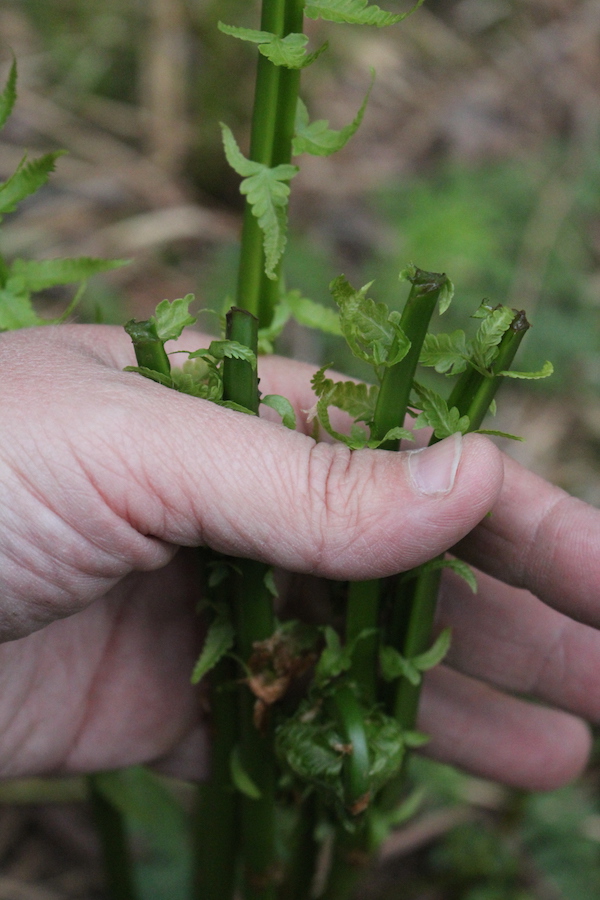
Cleaning Fiddlehead Ferns
The biggest challenge in foraging fiddleheads isn’t finding them or harvesting them, it’s cleaning them.
When they’re very young the fiddleheads are covered in brown paper-like scales that protect the emerging shoots. Those scales are not pleasant to eat, mostly because they’re papery, but also because they’re slightly bitter.
It’s important to remove those papery coatings before you cook the fiddleheads.
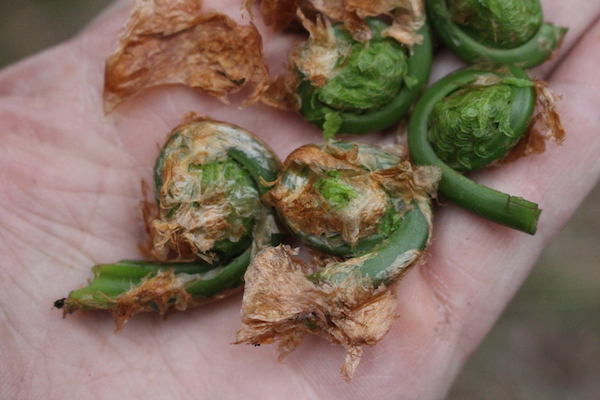
Generally, they’ll come off easily when rubbed with your hands. I’ll take a batch and put them in a colander in the sink, then rub them between my hands to loosen their coverings.
Often the papery coverings will have fallen off, or mostly fallen off later in the season, so this is most problematic early in the foraging season.
Careful washing is also important because of sand and dirt. Since fiddleheads grow close to the ground in sandy floodplains, they’re often full of sand and dirt.
A good rinse to remove the paper will also clean out the sand.
(Most of the time when you buy fiddleheads at the farmer’s market they’re already cleaned, but not always. An extra rinse never hurts in any case.)
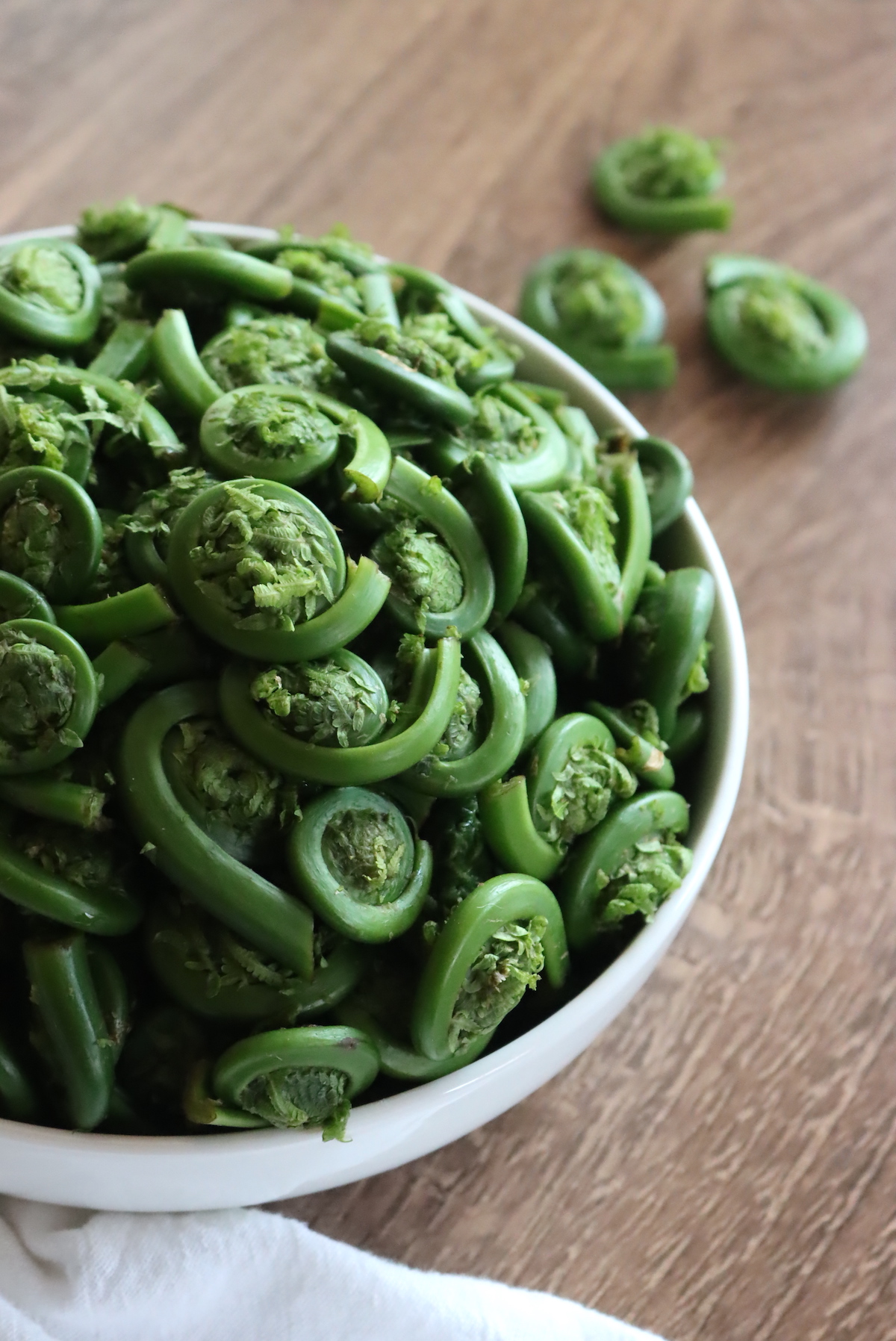
Fiddlehead Fern Recipes
So now the million-dollar question, “What do fiddlehead ferns taste like?”
Most people describe their flavor as a bit like asparagus, and that’s true to a point. They do taste a little like the crisp stalks of very fresh spring asparagus once cooked.
That said, they’re definitely not asparagus and they have their own unique flavor.
Fiddleheads work well anyplace you’d use a green vegetable, namely asparagus, green beans, or snow peas. For some reason, people love them in omelets, probably because spring is also a heavy season for eggs.
I love them as a plain side dish, boiled and then tossed with a bit of butter and balsamic vinegar. They’re also wonderful in stir-fries and spring vegetable soup.
We also make pickled fiddleheads each year, and that’s an easy way to preserve fiddleheads for year-round enjoyment.
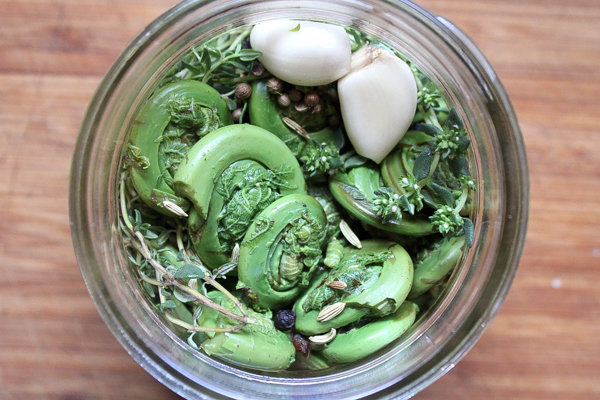
More Early Spring Foraging Inspiration
Looking for more tasty wild edibles to forage this spring?
- Spring Foraging ~ 20+ Wild Edibles
- Foraging Marsh Marigold
- Foraging Chickweed
- Foraging Miner’s Lettuce
- Foraging Morel Mushrooms
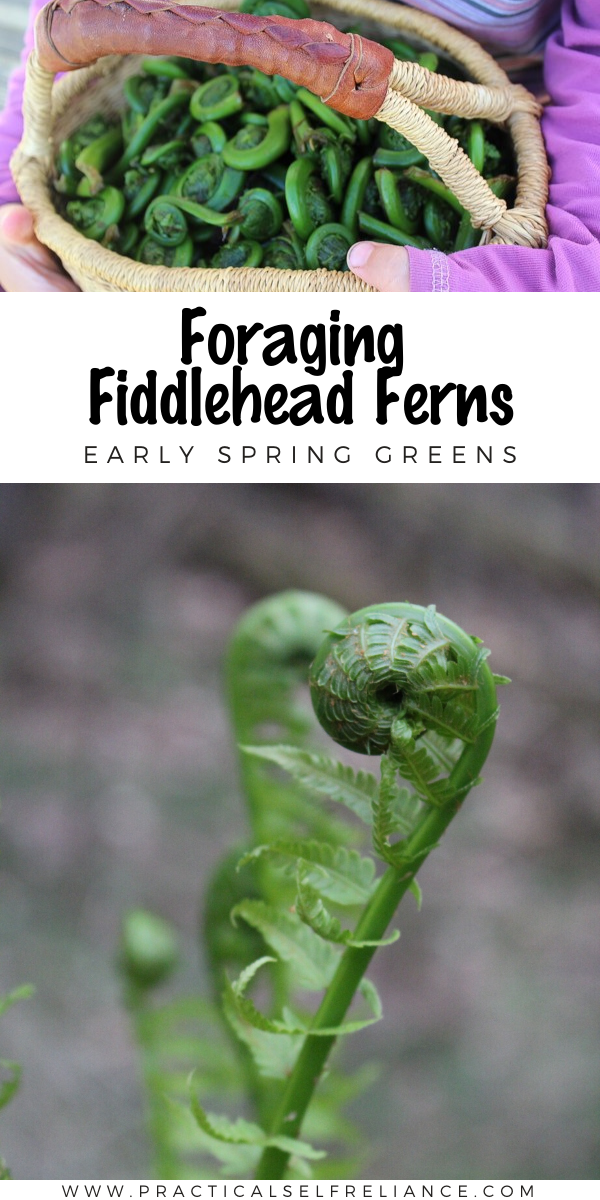




This is a very well done and informative post. I especially appreciate your emphasis on harvesting fiddle heads sustainably. It is wonderful to see more and more people connecting to the land and foraging, but many are not mindful of over harvesting. Thank you for your wise and respectful teachings.
Thank you for saying that. You’re very welcome and we’re so glad you enjoyed the post.
Nice article. I will not be doing any foraging. I live in Minnesota in the largest town in our county (about 6,000 people). Years ago I planted three fiddlehead ferns. They thave multipled to hundrends. They are getting ready to start coming up, once they do they will cover much of my front yard, ready for me to pick them. They require very little care.
I love planting wild edibles in my yard and garden area. What a great harvest you’ll have.
Love me some fiddleheads!
I believe we make omelets with fiddle heads for the same reason we make omelets with mushrooms : eggs exalt their taste, and so do cereals semolinas.
Thank you Ashley ; I learn so much from you !
Kind regards
Ode
You’re very welcome.